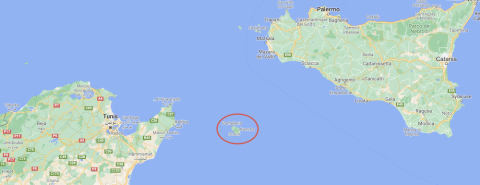Half-bottles from €22.95, 32 Swiss francs, 789 Czech koruna, CA$43, $35.94, 329.90 Norwegian kroner, 1,047 Ukranian hryvnia, HK$380, SG$68, AU$74.63, £42, 6,033 roubles
75-cl bottles from €45, 54.81 Swiss francs, £62.85, HK$735, SG$131, 11,720 roubles
I distinctly remember the first time I ever heard of Passito di Pantelleria. Unfortunately for me, it was when I read the wine list for the MW examination I had just taken. Cue dropped jaw. I had been able to tell that the grape was part of the Muscat family, and was confident of its deliciousness, but its origins and style were, at the time, completely unknown to me.
This was back in 2012, and the wine turned out to be Ben Ryé by Donnafugata (not a Rutherglen Muscat, as I had somewhat optimistically guessed), and a recent taste of the 2018 vintage confirmed that its deliciousness is still in place.
Central to the style and quality of all Passito di Pantelleria is the production process. The Muscat of Alexandria grapes, known locally as Zibibbo, are dried until they shrivel up, much as we all do when left out in the sun. This process is known as appassimento and is most closely associated with Amarone, the bulging-bicep red from the north-eastern Veneto region of Italy.
Pantelleria, however, is a speck of an island in the Mediterranean that represents Italy's southernmost point, and the wine is not red and hearty but gold and honeyed. Incidentally, the name Ben Ryé means 'son of the wind', a reference to the constant gales that blow over the island, requiring a form of head-trained viticulture that partially buries the vines to protect them, and has been granted 'intangible heritage' status by UNESCO.
In our OCW entry for Pantelleria, there are grumblings about wines exceeding 140 grams of sugar per litre from extending drying, but the 2018 vintage of Ben Ryé is just shy of 200 g/l and it reigns supreme. The helpfully candid technical sheet reveals that dried grapes are added to an existing fermentation in batches over the course of a month, not unlike the process for Tokaji Aszú.
Presumably, a conventional fermentation of the earlier-picked fruit must help achieve the total acidity level of 7.2 g/l, a vital ingredient in achieving balance in sweet wines. Then, the steeping of the dried fruit releases all that raisined sweetness, as well as that burnished golden colour and additional lip-smacking acid.
With its luscious, opulent flavours of orange peel and clove, it has particular affinity with the festive season, which also tends to be the time of year when dessert wines meet their sticky end. It would be an ideal accompaniment to Christmas pudding, blue cheese, or simply by itself beside an open fire, watching the flames reflecting through the glass. Although here in Singapore, it will be just as enjoyable – if perhaps less sentimental – to enjoy on a sweltering Christmas afternoon, sipped as a poolside pick-me-up.
Whatever the context, Ben Ryé is a glass of sheer pleasure, and very likely to be a style undiscovered by even the most seasoned wine drinker, whether they are sitting an MW exam or not. Thankfully, the many wines of Donnafugata tend to be well distributed, which makes Ben Ryé easily obtainable. I defy any wine lover not to be seduced by the magic of this Muscat.
For a more in-depth investigation into Donnafugata's passito wines, see this 2015 article.















